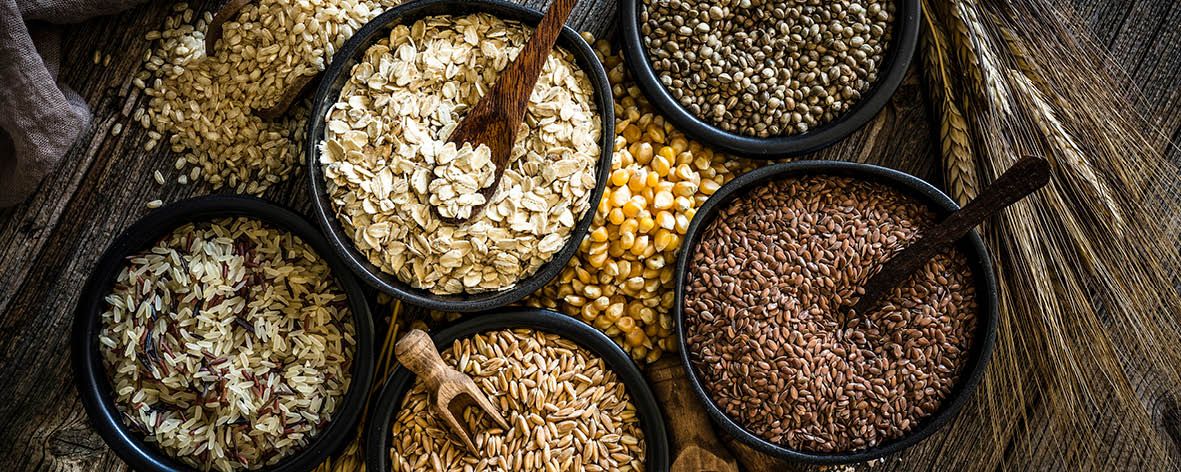Good carbs … why you should be eating more wholegrains

Did you know that the average Australian eats less than half the recommended quantity of wholegrains each day? And while you probably know that you should be eating more wholegrains, do you know exactly what grain foods are or why wholegrains are best? And just how much should you be eating each day?
The Australian Dietary Guidelines recommend that adults should eat 4-6 serves of grain (cereal) foods each day, with at least two-thirds of these coming from wholegrain or high fibre sources. Grain foods, also known as cereal foods, are made from plant grains such as wheat, oats, rice, barley, quinoa, rye and corn.
All grains start out whole meaning that they are a hard seed with three main components – the bran is the outside, fibre-rich exterior that contains vitamins and antioxidants. The endosperm is the carbohydrate-rich inner layer which makes up the majority of the grain. It also contains proteins and some vitamins and minterals. The final component is the germ, the vitamin-rich core that is home to protein, minerals and healthy fats.
Some grain foods, like rice and quinoa, are eaten whole, while others are processed after harvesting and are milled to remove the bran and the germ from the grain. This gives the grain a finer texture so that it can be used for things like flour, however it also removes much of the goodness from the grain. Wholegrains can be crushed to make wholemeal flour, which provide a similar nutritional content to wholegrains.
Eating wholegrains ensures that you get the maximum amount of vitamins, minerals, fibre and antioxidants from the grain, and it has been demonstrated that eating wholegrains can reduce the risk of colon cancer, diabetes, cardiovascular disease and diverticular disease.
To include more wholegrains in your diet, look for the words “wholegrain” or “wholemeal” and try some of these options:
Amaranth – with its earthy, nutty flavour, amaranth is a versatile wholegrain. Cook it with liquid for a porridge-like breakfast or pop the grains in a dry frying-pan to make a crunchy snack.
Barley – add barley to soups and casseroles, or add it to a salad. You can substitute barley for rice or quinoa as an alternative side-dish.
Brown rice – choose brown rice for the healthiest version of this pantry favourite. With the bran and germ still intact, it is nutritionally superior to white rice and is great in all kinds of recipes from fried rice to salads.
Buckwheat – another versatile wholegrain, buckwheat can be cooked as an alternative to porridge or stirred through soups and salads.
Millet – this ancient grain is popular in Asia and Africa and can be cooked to a fluffy texture, similar to couscous.
Oat groats – this is the wholegrain that oatmeal is made from and is the least processed form of oats, followed by steel cut oats, old-fashioned oats and instant oats.
Quinoa – high in protein, quinoa is fabulous in grain bowls, salads and served as a side-dish.
Whole Wheat Kernels – also known as wheat berries, these are chewy in texture and are a great addition to salads and soups.
Wild rice – it has a robust flavour and is perfect in soups, casseroles and pilaf.

